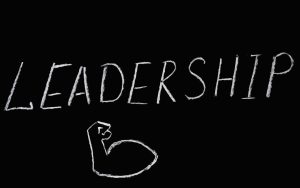What makes a great leader? Is it charisma, decisiveness, or vision? Or do certain personality types give people an edge when stepping into leadership roles? For professionals stepping into leadership or looking to grow, knowing which traits tend to align with effective leadership can help you play to your strengths, anticipate obstacles, and lead with authenticity.
In this article, we review what research shows about personality and leadership, explore personality-type models (MBTI and Big Five), explain how context shapes leadership, and offer tools and strategies for assessing and developing your leadership personality. We also show how HIGH5’s Leadership Assessment can help you accelerate your growth.

Personality types vs. personality traits
Before exploring which personality types align with leadership, it’s helpful to define the difference between personality types and traits.
- Personality Traits – refer to relatively stable patterns of human behavior and emotion. Models like the Big Five ( also known as the Five-Factor Model) describe traits such as Extraversion, Conscientiousness, Openness, Agreeableness, and Emotional Stability (sometimes called Neuroticism when measured in reverse).
- Personality Types – are categories based on combinations of traits or preferences (for example, MBTI’s 16 types). These describe tendencies, not fixed outcomes.
No single type or trait is perfect for all leadership situations. Effectiveness depends heavily on context—your organization, team, role, culture—and on how self-aware and adaptable you are.
Key personality traits that predict leadership effectiveness
Empirical research, especially meta-analyses, has identified a set of personality traits that show consistent correlations with who emerges as a leader and who performs well as a leader.
Other traits that matter include integrity/honesty, self-confidence, social intelligence, emotional intelligence, and courage. The “Big Five + additional traits” model captures many of these.
What personality models reveal about leadership behavior
Beyond traits, models that classify personality types or preferences help explain how people approach leadership differently.
MBTI and Leadership
The Myers-Briggs Type Indicator (MBTI) remains a widely referenced model for identifying preferences, such as Introversion vs Extraversion or Thinking vs Feeling. Some types are frequently cited in leadership research or popular literature as being well-suited to leadership roles:
- Types like ENTJ, ESTJ, and INTJ often appear in discussions of leadership because these combinations tend to include decisiveness, strategic thinking, structure, and drive.
- Other types bring different strengths: ENFJ may be strong in people orientation; INFJ or INTP in vision or innovation. The key is not “best type” but “best fit” given role and context.
The goal is to align personality with the specific demands of a leadership role. Research on MBTI’s value for predicting leadership outcomes shows mixed results. Recent studies suggest that MBTI can support self-awareness, improve team communication, and help leaders understand their style. Still, it’s generally less consistent in forecasting performance when compared to trait-based models.
Other style models and types
Models like DiSC and Social Style highlight observable behaviors. These include communication habits, conflict responses, and leadership tendencies.
Some frameworks distinguish between strategic and operational styles, or visionary and relational approaches. Others expand on traditional trait models. The HEXACO model, for instance, adds Honesty-Humility—an important factor in contexts where ethics and trust matter.
The limits of personality in leadership
Having the “right” personality type or traits alone doesn’t guarantee effective leadership. Several factors matter:
1. Moderate effect sizes: Research shows that personality traits do influence leadership, but their impact is moderate. Other elements like skills, experience, cultural context, and the specific situation carry significant weight. For example, Power et al. (2015) found that the Big Five traits accounted for a substantial part of the variance but not all.
2. Role and environment matter: What works in a startup may not apply in a large corporation. A fast-changing environment requires different qualities than a stable one. The same applies to technical roles versus people-focused ones.
3. Situational leadership and adaptability: Strong leaders shift their style based on what’s needed. They might take charge in one moment and step back to collaborate in another. Good leadership often involves responding to the team’s needs, not sticking to a fixed style.
4. “Dark side” or overused strengths: Traits like decisiveness or drive can become abrasive; high openness without structure can lead to scatter; very high conscientiousness without flexibility can cause rigidity.
How to assess your leadership personality and type
Understanding yourself is the starting point. Here are several tools and approaches that can help:
Validated trait assessments
These assessments are grounded in research and offer insights into stable personality traits.
- HIGH5 Leadership test
- Big Five / Five-Factor Model tools
- HEXACO
Type and preference assessments
These focus on behavioural tendencies and how you prefer to work with others.
- MBTI (if used carefully and along with awareness of its limitations).
- DiSC and similar tools.
Feedback mechanisms
These help identify patterns in your behaviour and perception gaps.
- 360-degree feedback (peers, subordinates, superiors).
- Self-reflection (journals, leadership challenges).
Strengths-based assessments
- These tools help you identify what energizes you and where your natural abilities lie. Rather than focusing on fixing weaknesses, strengths-based assessments guide you toward areas where you already have momentum. This allows for more effective development, aligned with your personality and preferred ways of working.
HIGH5 leadership strengths assessment
- HIGH5 offers a tool designed to identify areas where you lead with ease and where you may want to grow. Using such assessments helps you develop a personalized leadership roadmap. Try the HIGH5 leadership assessment to better understand how you lead.
Developing leadership regardless of your personality type
Leadership can be developed, even if your personality doesn’t match common stereotypes.

- Utilize your strengths. If you’re high in conscientiousness but lower in extraversion, you may lead through reliability, strategic planning, and follow-through. Let more socially expressive team members handle interactions that suit their strengths.
- Develop weaker dimensions. For example, if you’re introverted, work on visibility and communication. Those resistant to change can intentionally take on unfamiliar challenges to grow.
- Work on emotional intelligence. Build self-awareness, practice empathy, and manage reactions constructively.
- Learn leadership behaviors. These include sound decision-making, clear communication, conflict management, and motivating others.
- Seek mentorship, coaching, and feedback. They help identify blind spots and refine your approach.
Leadership styles that work in different settings
Here are contrasting examples to illustrate that different personality types can succeed as leaders:
The Extroverted Driver: Someone who is outgoing, decisive, dominates discussions, and pushes aggressively toward goals. Their direct style suits sales, operations, or fast-paced environments, where driving momentum and clarity are essential. But the risk lies in balancing assertiveness with empathy to avoid distancing the team.
The Introverted Strategist: Someone quieter, more reflective; may prefer deep thinking, listening, consensus. They often excel in tech, research, or engineering, where thoughtful planning is more valued than visibility. While not always noticed early, such leaders often build strong foundations.
The Relational Leader: Highly empathetic, emphasizes team wellbeing, collaboration. In environments where psychological safety, team cohesion, and people development are important (e.g., nonprofits, education, creative teams), this style can unlock high performance.
The Innovative and Visionary Leader: Curious and comfortable with uncertainty, this leader embraces change and new ideas. They often thrive in startups and fast-moving industries. The potential downside is weaker operational follow-through if they lack structure.
These examples show there isn’t a single “best personality type.” Leadership success depends on the match between personality traits, the demands of the environment, and the leader’s ability to adapt.
FAQ
Can introverts be great leaders?
Absolutely. While extraversion is often correlated with leadership emergence, introverts bring strengths like reflection, deep listening, thoughtfulness, calmness, and can lead with high impact—especially when roles require careful planning, vision, or knowledge work.
Is MBTI scientifically valid for predicting leadership effectiveness?
MBTI can provide useful insight into preferences and styles, and help with self-awareness and team communication. But research suggests its predictive validity for objective performance or leadership effectiveness is weaker compared to trait-based models like the Big Five. Use it as a tool, not as a label.
What if my personality type doesn’t match what typical leadership types show?
Then you can focus on your unique strengths, adapt where needed, and develop complementary skills. Leadership effectiveness comes more from how you lead rather than which box you fall into.
Conclusion
There is no single personality type that defines strong leadership. What matters most is self-awareness, the ability to adapt, and aligning your strengths with the demands of your environment. Outgoing, reflective, pragmatic, or visionary individuals can all lead successfully through personal insight, consistent growth, and ongoing development of leadership behaviors.






